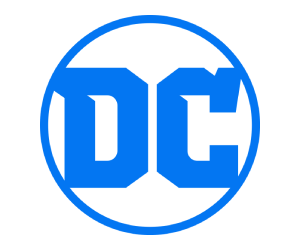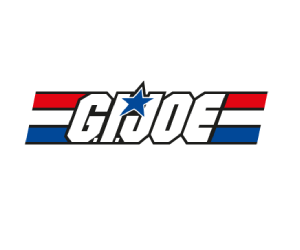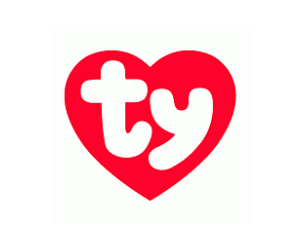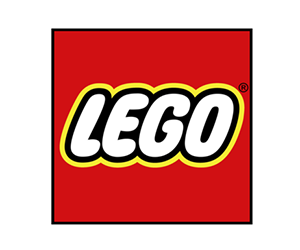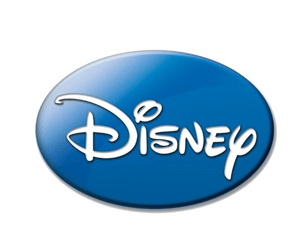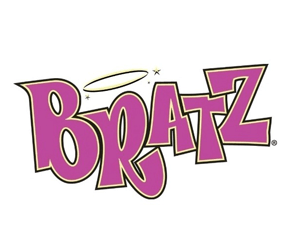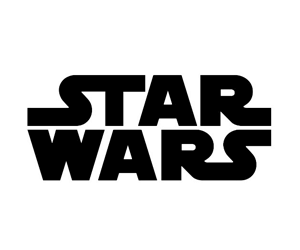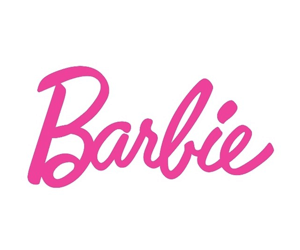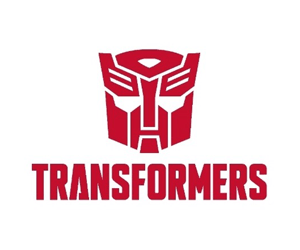The Evolution of Star Wars Figures: From Vintage to Modern Era
Star Wars figures have come a long way since the original vinyl and plastic toys were released alongside the first Star Wars film in 1977. For over 40 years, these iconic characters have continued to capture the imaginations of fans young and old. This article will explore the evolution of Star Wars figures from the vintage era through to the incredibly detailed modern collectibles available today.
The journey of Star Wars figures over the past four decades reflects advances in sculpting, articulation, costuming, and overall quality.
The Vintage Era (1977-1985)
The vintage era of Star Wars figures dates back to the release of the very first film. These original toys were revolutionary for their time, bringing popular characters like Luke Skywalker, Han Solo, and Darth Vader to life in plastic form.
The Beginning - Early Bird Certificate Package (1977)
In 1977, Kenner Toys had the license to produce action figures for Star Wars but were not able to get the toys on shelves in time for Christmas. Instead, they sold an "Early Bird Certificate Package'' which included a cardboard display stand for the figures and a certificate that could be mailed away to receive four action figures in early 1978. These first four figures included Luke Skywalker, Princess Leia, Chewbacca, and R2-D2.
Approximately 500,000 Early Bird Certificate Packages were sold in time for the 1977 holiday season, priming kids for the full line of toys to come.
First 12 - The Original Kenner Action Figures (1978)
The first 12 Star Wars action figures were released by Kenner in 1978, after being delayed due to high demand after the film's release. These 3.75” figures featured the very basic 5 points of articulation, allowing mainly for movement of the arms and legs.
The original 12 characters included:
- Luke Skywalker
- Princess Leia
- R2-D2
- C-3PO
- Chewbacca
- Han Solo
- Obi-Wan Kenobi
- Darth Vader
- Stormtrooper
- Sand People
- Death Squad Commander
- Jawa
With their simple construction and limited posing options, these action figures were clearly designed for play rather than display. However, the innovative use of injection molded plastic gave them a level of detail never before seen in toys of this scale.
The Kenner Years (1978-1985)
Kenner continued producing Star Wars figures throughout the late 70s and early 80s, expanding the line to include characters from The Empire Strikes Back and Return of the Jedi. Well-known additions included Yoda, Boba Fett, and the Imperial AT-AT driver.
By 1985, Kenner had released approximately 100 unique characters, 25 playsets, and a dozen vehicles. The figures remained very similar in style throughout this vintage era, still boasting just 5 points of articulation.
While sculpting and costume details improved slightly over the years, Kenner’s focus stayed on affordable toys meant for play. As Star Wars mania began to fade in the mid 80s, figure production slowed and eventually stopped altogether in 1985.
The Dark Age (1985-1995)
After 1985, new Star Wars toys were scarce, ushering in a decade referred to by collectors as “The Dark Age.” Interest waned as there were no new films, and the toys produced during this period mostly re-used existing molds. Very few new characters were introduced, with exceptions like the Gamorrean Guard and Admiral Ackbar.
Without any new content in the Star Wars universe, nostalgic collectors who grew up with the vintage toys became the primary market. Production runs were smaller, distribution was limited, and remaining Kenner molds began wearing out. A handful of major companies like Hasbro acquired the license for a few years here and there but did little to advance the toy line.
It wasn’t until the early 90s that the original Star Wars trilogy was re-released on VHS and garnered renewed interest. This built hype for an eventual revival of the franchise.
The Renaissance (1995-Present)
Starting in 1995, Star Wars figures entered a renaissance period that continues today. This was sparked by new films, comics, books, and other content that brought Star Wars back to the mainstream public.
Advancements in sculpting and toy engineering allowed for more articulation, greater character likenesses, and increased quality overall. The collector’s market grew as people sought to recreate their childhood collections. What was once just affordable playthings became popular collectibles.
Power of the Force 2 (1995-2000)
Kenner regained the Star Wars license in 1995 and kicked off the renaissance with their “Power of the Force 2” line. For the first time in a decade, new characters were introduced based on content from the expanded universe beyond the films.
While adhering to the classic 3.75” scale, the new figures boasted more articulation points and greater attention to detail in costumes and accessories. This improved quality came at a cost, with prices increased from $1.99 to $4.99 at retail.
The initial offerings focused heavily on Luke, Han, Leia and other principals in updated costumes as seen in comics and novels. Fan favorites like Mara Jade, Grand Admiral Thrawn, and droids like R5-D4 also made their debut.
The Prequels Trilogy (1999-2005)
The hype for new Star Wars movies kicked into high gear in 1999 with the release of Episode I: The Phantom Menace. For the first time in 16 years, fans would return to theaters and see their favorite characters back in action.
Toy companies went all out creating a new world of figures and vehicles set before the classic trilogy. Attention to detail on these figures saw huge improvements from prior lines. Costume texturing, skin tones, and character sculpting reached new heights.
Hasbro had taken over the license from Galoob in 1999. From 1999 to 2005 they produced hundreds of figures spanning all six films plus continued offerings from the expanded universe.
The early 2000’s saw an explosion of Star Wars collectibles and the dawn of limited edition and chase variants prized by collectors.
Certain figures like Kit Fisto or Plo Koon became hot commodities if packaged with the wrong name on bubble cards.
The Black Series (2010-Present)
As part of the 30th anniversary of Star Wars, Hasbro launched “The Black Series” line in 2010. These 6” scale figures represented the most detailed, poseable, and screen-accurate toys to date.
The Black Series expanded beyond film characters to include the Star Wars: The Clone Wars and Star Wars Rebels animated shows. The larger scale allowed for incredibly intricate figures featuring tailored costumes, layered texturing, and the highest level of articulation for endless posing options.
In 2017, the veteran 3.75” sized figures were rebranded as “The Vintage Collection”, harkening back to the classic Kenner style. These combined modern detailing with elements of the retro packaging.
Hyper Realistic Collectibles (Present Day)
The past decade has seen collectible companies like Sideshow and Hot Toys take Star Wars figures to unbelievable new heights. Using cutting-edge digital sculpts and high-end materials like actual fabric costumes, the figures look like they walked right off the big screen.
These “movie masterpiece” collectibles feature heroic scale detail on everything from costumes to skin pores with incredible accuracy. The hefty price tags upwards of $250 reflect the premium quality and low production runs.
For the ultimate in realism, Sideshow and Hot Toys have created life-size Star Wars collectibles standing 6 to 7 feet tall. Modeled after the costumes and props used in the films, these full scale figures start around $6,000 dollars.
The Future
Star Wars collectibles have come a long way since their primitive beginnings over 40 years ago. It's incredible to see where the hobby has progressed from simplistic toys for playtime enjoyment to detailed high-end collectibles rivaling props used on screen.
Advancements in manufacturing, sculpting techniques, robotics, 3D modeling and other technologies will only improve the realism and quality of Star Wars figures. Costume materials and tailoring methods will better emulate full-size costumes actors wear on set.
Designers can utilize 3D scanners and printers to replicate props, weapons, and artifacts exactly as seen on screen.
The advent of television shows like The Mandalorian on Disney+ provides an ongoing stream of new characters and storylines for companies to continually update their toy lines. With Disney at the helm of Star Wars, the franchise shows no signs of slowing down, ensuring its beloved characters will continue to inhabit new figures, vehicles, and playsets for generations to come.
Whether they are posed on collector's shelves or ready for imaginative playtime fun, Star Wars figures help keep the stories from a galaxy far, far away alive and well here on earth.
Limited Editions and Exclusives
As Star Wars collecting grew into more of a hobby for adult fans, toy companies began producing special limited editions and store exclusives. These short packed variants drove up demand and secondary market prices for the harder to find figures.
Hasbro pioneered the idea of chase figures - packaging highly sought after characters with the wrong names on bubbles. So gamblers and completists would have to purchase case after case trying to score the incorrectly carded figure.
Some of the most notorious examples included the literally named "Nikto Guard" packaged on a bubble for J'Quille, a highly prized Mon Calamari Rebel Officer labeled as Admiral Ackbar, and the Imperial Commander accidentally labeled as the Clone Emperor. These infamous errors could command prices 10x higher than the correctly packaged version.
Online retailers and brick and mortar stores offered special exclusive figures only available through their outlets. Collectors had to purchase an exclusive Slave Leia from Celebration or a blue Snaggletooth redeco only at Target.
Hasbro also produced ultra limited convention exclusive figures packaged with rare coins, lithographed metal lunch boxes, or sealed within black mystery boxes where you never knew which figure you'd get.
This influx of limited editions meant completist collectors had to buy from multiple retailers and deal with scalpers to try and amass full sets. But the chase was all part of the fun for serious collectors.
Vehicles and Playsets
While the action figures get most of the attention, the Star Wars toy lines have included all kinds of vehicles and playsets over the years. Kenner's original offerings featured a Death Star, Millennium Falcon, TIE Fighter, and of course a wide range of iconic ships and speeder bikes.
Modern incarnations of the X-Wing, Snowspeeder, AT-AT and other vehicles incorporate far more detail, movie-accurate decaling, and additional features like sounds, lights, or bubble cockpits.
Some of the more unique playsets over the years include Jabba's Palace, the Cantina, Ewok Village, and foldout card stock play scenes depicting locations from Hoth, Bespin, Endor, and Jakku.
While most vehicles were meant for kids to play with, adult collectors have gravitated toward the premium "Ultimate Collector Series" options. TheseBoasts large sculptures packaged with an array of minutely detailed scaled ships and mini-figures to display.
Whether zoomed around a kid's room or posed behind plexiglass, the iconic Star Wars vehicles have been part of the toy line almost as long as the figures themselves.
Marketing and Branding
Kenner and Hasbro put nearly as much thought into the marketing of their Star Wars action figures as they did into designing the toys themselves. Branding, character selection, packaging, and other advertising decisions were crucial to each new line's success.
One key focus area was maintaining consistency with the Kenner logo and classic Star Wars font. This tapped into nostalgia for parents while attracting new generations of kids. The distinctive logo shaped brand perception and maintained market presence even through the Dark Age years.
Packaging changed with the times transitioning from retro-style card backs to more immersive bubbles, collector focused window boxes, and copies of actual vintage packaging. But the logos and colors maintained continuity across nearly 5 decades worth of toys.
Characters were chosen not just for popularity but for the ability to create or replicate excitement around particular films, shows, or expanded universe stories. Figures like Thrawn and Mara Jade stoked demand because of the beloved heir to the Empire and Jedi Master novels.
Product naming was important as well. Power of the Force, Phantom Menace, and Vintage Collection lines all aimed to capture the essence of that particular toy era and evoke fond memories for fans.
Through smart marketing, consistency, tapping into nostalgia, and capitalizing on new content, Star Wars toys maintained their storied legacy through the years.
Custom Figures and Kitbashing
Beyond official products from licensed companies, a whole world of custom figures exists within the Star Wars collecting community. Kitbashing involves taking parts from multiple toys and combining them to create a new character hybrid.
Heads, arms, costumes, and weapons get mixed and matched between characters to design original mash-ups. Things like an Admiral Ackbar head on a snowtrooper body or C-3PO colored like R2D2 get created through kitbashing.
Sculptors also create unique resin casts of heads or accessories to modify figures and make them their own. This allows for characters that exist in comics or video games but have never had official toys made of them to be brought to life by hobbyists.
Custom paint jobs transform the look of an existing figure into something totally unique. Artists use paint masking, shading, highlighting, weathering, and other techniques to radically alter a toy's look beyond just a factory paint app. Those talented at sculpting entirely new heads or costumes can create figures not possible otherwise.
Some collectors may scoff at doctored toys as inauthentic. But for creative hobbyists, the ability to freely modify figures is all part of the fun of kitbashing and customs.
Wrapping It Up
The evolution of Star Wars figures from simplistic 1970s plastic playthings to highly detailed modern collectibles has been nothing short of spectacular. Those rudimentary 5-point articulated toys from Kenner launched a massive franchise that continues delighting fans over 40 years later.
It's incredible to look back at the vintage figures that started it all and be able to compare them side-by-side with today's life-like offerings. The advances in sculpting, costuming, articulation, and overall quality are a testament to the continued cultural impact of the Star Wars universe.
While kids will always cherish being able to play with their favorite characters, collectors take pride curating displays of figures that rival the actual on-screen costuming and props. New technologies will only improve the realism and accuracy as the Star Wars story continues to expand across movies, shows, books, comics and more.
But even with all the changes over the decades, at their heart Star Wars figures will always capture that quintessential age-old struggle of good versus evil in a galaxy far, far away. They represent imagination, adventure, and iconic characters that have left an indelible mark on pop culture.
Recent Posts
-
He-Man’s Legacy: MOTU Collectibles in 2025
The Masters of the Universe (MOTU) franchise, led by the iconic He-Man, has left a powerful legacy i …Aug 26th 2025 -
Collectible TMNT Figures from the 90s
The Teenage Mutant Ninja Turtles exploded onto the scene in the late 1980s, and by the 1990s, they w …Aug 26th 2025 -
How to Style Your Loungefly Backpack
Loungefly backpacks are more than just practical accessories—they’re fashion statements, fandom show …Aug 26th 2025



















